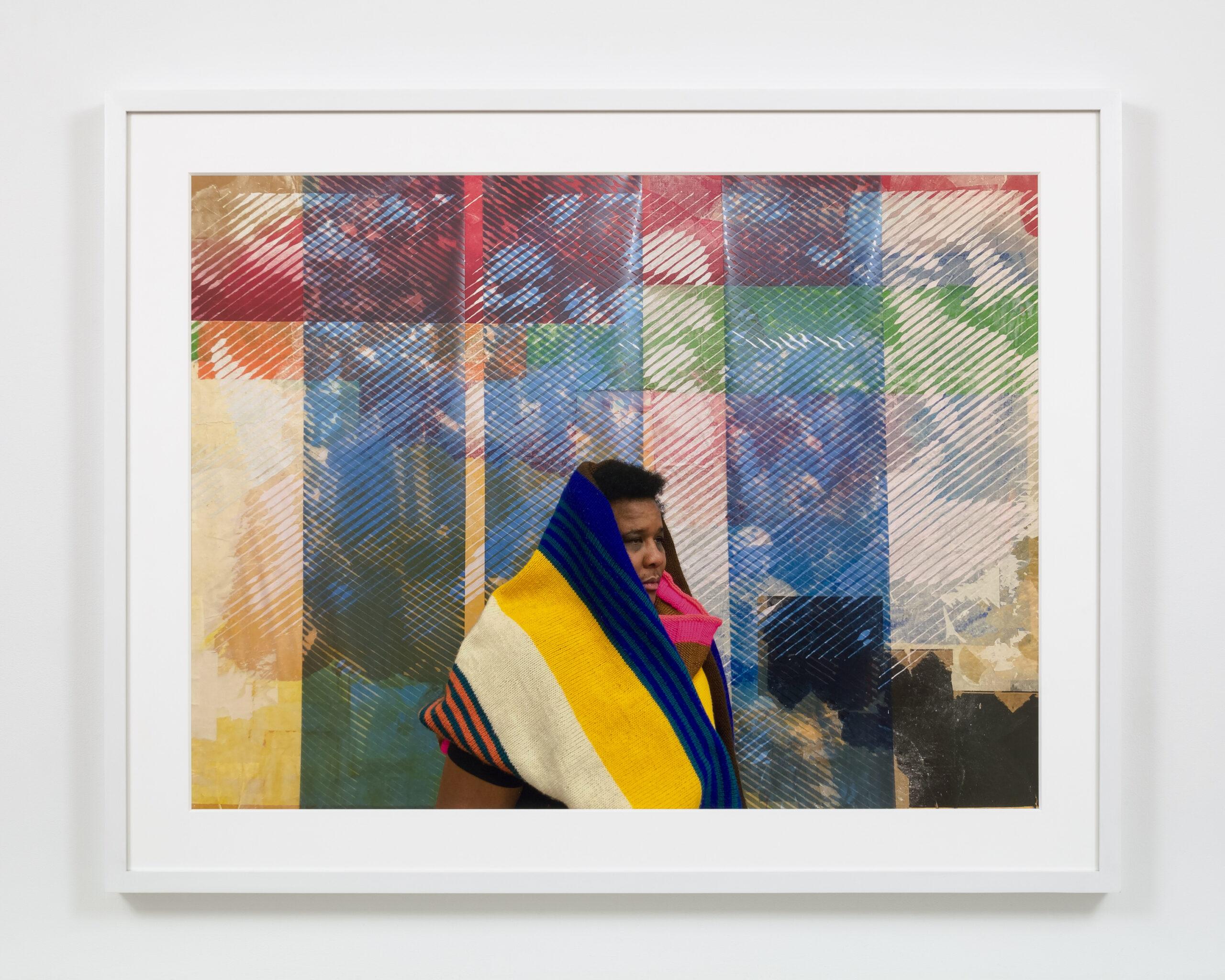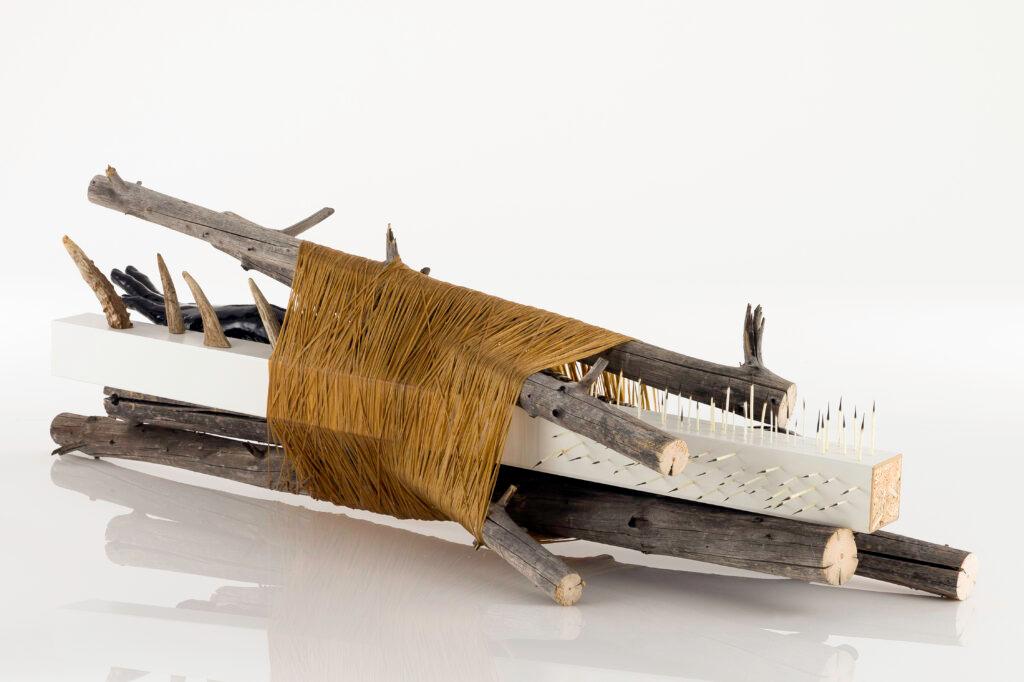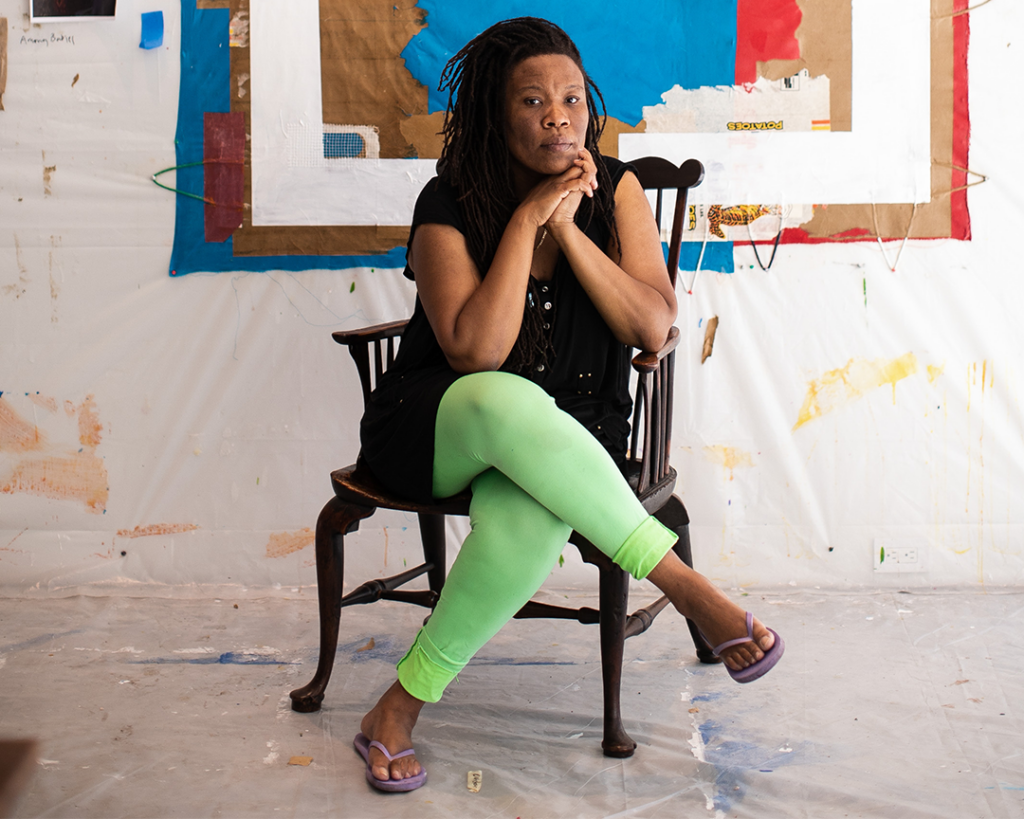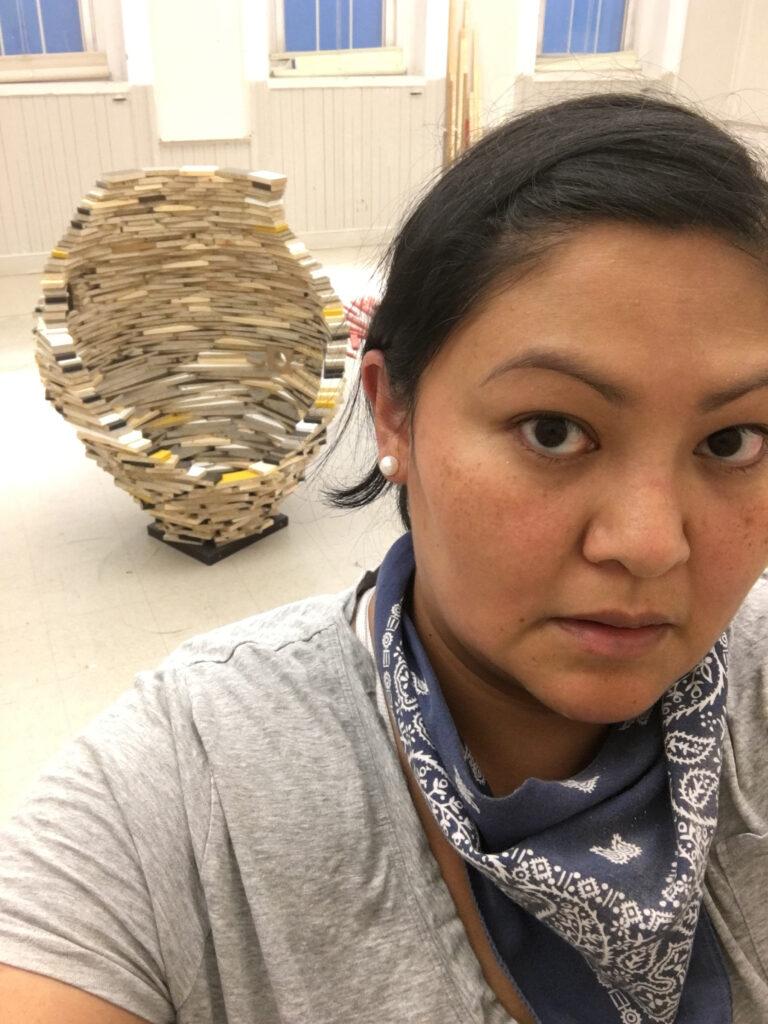
From the humor of Indigenous people to the self-determination of Black homesteaders. Vibrant colors, to the contrasting basics of black and white.
Two artists are showcased this summer at the Museum of Contemporary Art Denver. And while they may seem very different and disconnected, the opposite is actually quite true.
They are Tomashi Jackson: Across the Universe and Anna Tsouhlarakis: Indigenous Absurdities.
MCA calls Tomashi Jackson: Across the Universe a mid-career survey of nearly a decade of Jackson’s work across disciplines and provides an overview of the threads in Jackson’s practice and her varied use of materials.
Anna Tsouhlarakis: Indigenous Absurdities features new work by the Boulder-based artist as she explores Native American identity. To redefine Native art, Tsouhlarakis uses video, performance, sculpture, photography, and installation to push aesthetic and intellectual boundaries.
Curators found that both artists are deeply engaged in cultural conversations
Planning for these exhibitions goes back as early as 2019, and includes trips to Miami and Greece. That only heightened the energy in the spaces during the installation in MCA Denver.
Miranda Lash, the Ellen Bruss Senior Curator at MCA Denver, oversaw Jackson’s exhibit. She said with less than a week left for installation, both artists were in the space. “They met each other and immediately hit it off, and started talking about their shared interests. And by the end, Tomashi was taking selfies with Anna. And, they were both talking about their respective time studying at Yale and participating in the Skowhegan residency. So it was very cool to see them connect.”
Leilani Lynch, the associate curator at MCA Denver, worked on Tsouhlarakis’s exhibit. She agrees that installation time holds a special place in the exhibition process. “Because so much of the work prior to that takes place through studio visits or virtually, and just a lot of coordination and email, phone calls. And then you're really on the ground, your feet are there, you're standing up, you're looking at the works in space.”

Lynch said this was especially true for Anna Tsouhlarakis as this was the first time seeing everything done. “And I know in Tomashi’s case, there were works that she hadn't seen in person for a long time. And so it's kind of a homecoming of all the works just kind of coming together in space.”
The way these exhibitions communicate with one another was by design. Both artists are deeply engaged in cultural conversations around specific communities and deep histories, involving systemic racism, and how we can push forward as a community in conversations.
Lynch also noted the aesthetic contrast. “Tomashi uses a lot of color to explore the various themes and subject matter in her work. Whereas Anna, sort of stays with a more minimalist black and white palette, with some sort of natural colored exceptions. So I also liked how that, thinking about how that would play out, visually in the spaces.”
Across the Universe derived from one of the artist’s favorite works
The name for Tomashi Jackson’s exhibition, Across the Universe, was derived from one of the artist’s favorite pieces from her last body of work, called The Great Society, which opened at Tilton Gallery in New York in November of 2022.
“I painted black, halftone lines of an audience rising to their feet after Nina Simone performed ‘To be Young, Gifted and Black’ at Morehouse College in 1969," Tomashi Jackson said. “It looks like a universe. It looks like a starry night. It looks like a number of things. And, a lot of my pieces take their titles from music that I love, or that I loved along with my mother. And, I was a big Beatles fan in high school, and ‘Across the Universe’ was kind of a natural conclusion for me.”

This is Tomashi Jackson’s first exhibition in Colorado, but she spent significant time here to develop the new works for this show. “I'm really in love with Colorado. They brought me out here last summer for a residency, a partnership with Swoon Art House that is a product of the Scintilla Foundation, a philanthropic arts and humanities-focused foundation based in Boulder,” Jackson said. She was given six weeks to explore and meet people.
“When I got here last summer. I was so moved, as I continued to learn more and more about the history of the organization before there was a big fancy building and the community-centered programs and efforts and strategies that were founded before the museum had this building,” Jackson said. “I really left here quite hopeful. I wasn't expecting to leave with my heart so full, but the people that I've met here and the places that I've been, the working people who've embraced me, I just fell in love.”
Jackson created new pieces specific to Colorado, with additional inspiration from the documentary, This is Not Who We Are. “I really ended up focusing on images of Black people in Colorado from the 1800s to the present, producing spaces for self-determination, facilitating spaces for joy, for peace, and for self-determination,” Jackson said. That includes images from the Deerfield Colony, images of Black tourists who visited Pikes Peak in 1925, intersected with an image of Black young adults gathered in a lectern in Boulder for what at the time had been organized as Saturday Freedom Schools.
Artist highlights how humor can infiltrate a community and culture
Boulder-based artist Anna Tsouhlarakis also created new works specifically for this exhibition at MCA Denver. This began through a 2021 award from Creative Capital, a New York-based foundation. Tsouhlarakis said she knew early on that she wanted this project to focus on indigenous humor. “But not just be about jokes or ideas of humor, but, the kind of ways that humor infiltrates a community or culture,” Tsouhlarakis said. “And absurdity seemed to be a way to kind of encapsulate that larger idea of how humor infiltrates a people, a community.”

For Indigenous Absurdities, Tsouhlarakis has created six sculptures, six large-scale collages, and one video installation. She describes her pallet as monotone. “I've always had a very complicated relationship with color. I think a lot of my work deals with native identity, and I feel like color, specifically, skin tone tends to be a big part of the conversation when we talk about culture and identity and those types of things. And I feel like it can really skew a conversation and kind of push it one way or another,” Tsouhlarakis said. “That's not something I'm interested in talking about. And so early on I kind of decided that the palette that I would be using would be more minimalist kind of across my practice.”
Tsouhlarakis said she hopes one of the biggest takeaways is that Natives aren’t only serious people. “People know that natives are still around and that we're here, but that we're not all just serious while we have attorneys and people doing fights about water and land and for our native children, that there is this other side of us that is a bit goofy and ridiculous and that we can make connections through that as well,” Tsouhlarakis said.
You can see the current exhibits, Tomashi Jackson: Across the Universe and Anna Tsouhlarakis: Indigenous Absurdities, open now through Sunday, Sept. 10.
Find information about Colorado Native: A Native American Comedy Showcase on August 24 at MCA Denver here.









